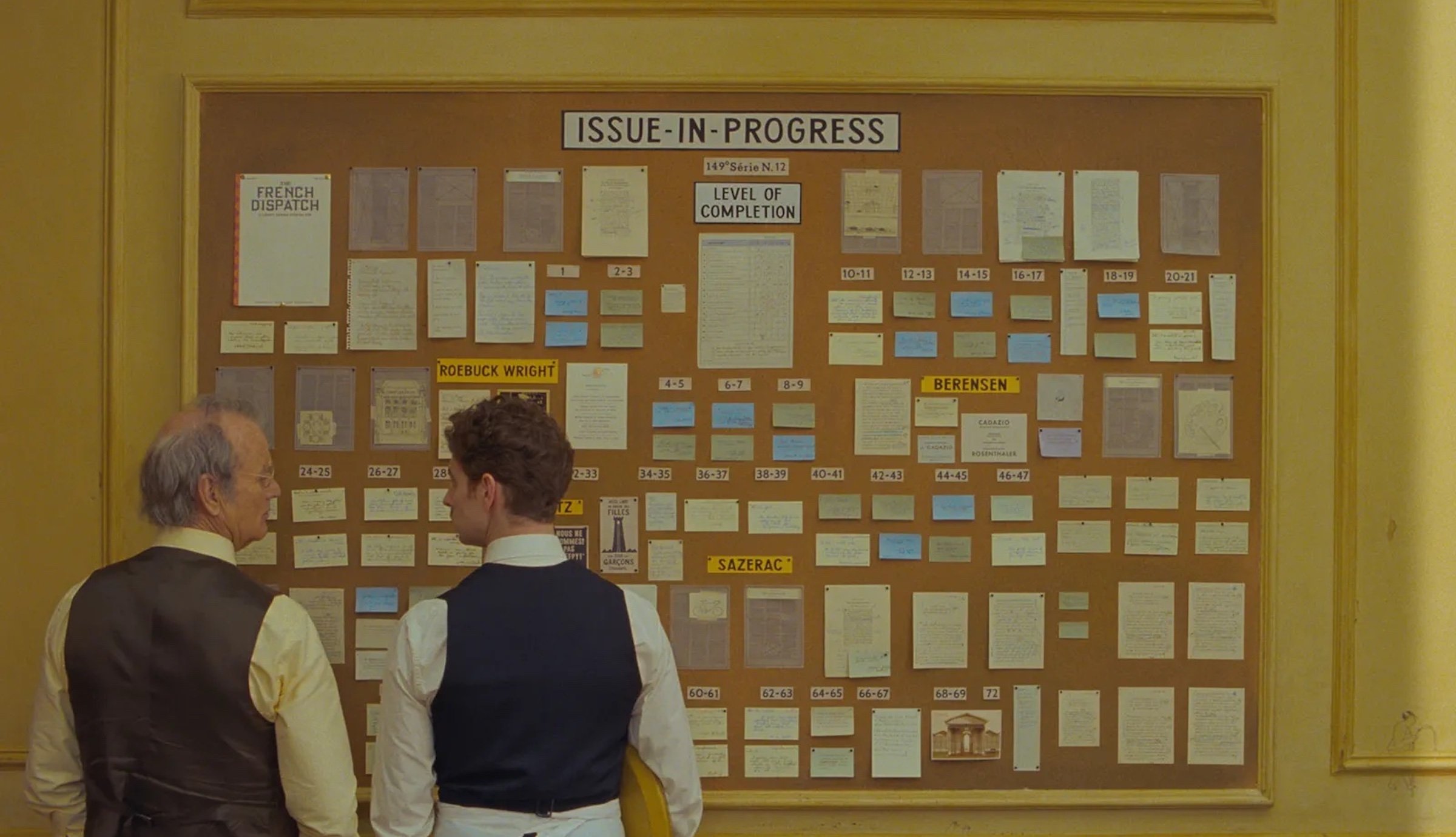Three-Act Structure: The foundation of screenwriting
May 31, 2022
Most screenplays utilize the classic Hollywood three-act structure. At its core, the three acts represent a beginning, a middle, and an end. Some people attribute the origins of this structure to the Greek philosopher Aristotle. In his earliest surviving work of dramatic theory Poetics, Aristotle wrote, “A whole [story] is what has a beginning and middle and end.” This is not only fundamental to storytelling, it’s the closest reflection of an entire life cycle, which naturally has a beginning, middle, and end.
Despite its classical beginnings and inherent logic, the three-act structure wasn’t popular for much drama throughout the centuries. In fact, for a very long time, a five-act structure was favored by playwrights. It has been argued, however, that even within the five-act play structure, there is essentially a broader three-act structure that the acts adhere to—they were simply breaking up the middle into three separate acts.
In the late 19th Century, Henrik Ibsen helped to streamline and modernize stage plays by popularizing the three-act structure with his play A Doll’s House. It makes sense that when motion pictures were in their infancy stage, they would look to plays for not only source material, but for a structural cue; and a three-act structure was quickly embraced as the primary framework for most feature-length motion pictures, even if it was not widely discussed.
That is, before Syd Field.
A screenwriter’s icon
A freelance screenwriter and script reader, Syd Field became an industry sensation with his first book on the craft of screenwriting, 1979’s Screenplay: The Foundations of Screenwriting. Selling over a million copies and translated into over a dozen languages, the book is considered the “bible” of screenwriting craft to many around the world. It was Screenplay that popularized the discussion of three-act structure in screenwriting, and Field’s analysis and embellishment of the theory are still considered canon to this day.
His expanded model for the three-act structure designates each act accordingly: Act I (Setup), Act II (Confrontation), and Act III (Resolution).
Act I
The Setup establishes the main character, including their primary relationships, living situation, and aspiration(s).
Act II
The Confrontation sees the main character trying to pursue a goal while confronting various obstacles that build and build until there’s a major crisis or “lowest point”.
Act III
In the Resolution, the main character finds a solution to the crisis and achieves their goal (unless it’s a tragedy).
Or as George Lucas broke it down when explaining why The Empire Strikes Back was the darkest film of the original Star Wars trilogy: “In the first act, you introduce everybody, the second act you put them in the worst possible position they could ever possibly get into in their lives, and they’re in a black hole never able to get out, and then in the third act they get out.”
Another way of thinking about it comes from noteworthy filmmaker Jean-Luc Godard, “A story should have a beginning, a middle, and an end, but not necessarily in that order.” This leads us into nonlinear storytelling in which the events aren’t told in chronological order.
Nonlinear scripts: Still three acts
Final Draft Hall of Fame winner Quentin Tarantino often takes this approach and even goes so far as to structure his scripts like novels with numerous chapters rather than typical act breaks. However, if you step back from Tarantino’s films, you will discover there’s a broader fundamental framework that he adheres to; there’s still a beginning, middle, and end—just not necessarily in that order.
In addition to the occasional nonlinear film, the rise of streaming content in recent years has led to fewer narrative constraints. We’re now becoming accustomed to mini-series and programs with various running times. We’re no longer in the 90 to 120-minute box like before, and as a result, we’ll surely see an increase in new storytelling techniques and narrative structures.
Regardless, it’s probably best for a novice writer to work within the classic three-act framework. Once you learn the fundamentals, you’ll be able to subvert formulas and expand your craft with greater skill and dexterity. Imagine putting together a jigsaw puzzle if you didn’t see the image you’re attempting to construct beforehand? The three-act structure—the beginning, middle, and end— is that image. It works as both a goal and guide during the writing process.
The 1-2-3 Workflow to structure your three acts
Final Draft features three-act templates that show you how to structure your script according to this method. Click File > New From Template and a window of templates will open. You can then, for example, select 3 Acts for a three-act structure template which you can use to help you structure and write a three-act screenplay.
In addition to the three-act template, Final Draft 12 has several tools and features that can assist you in writing a three-act screenplay. Utilizing the Beat Board™, Outline Editor ™, and Send To Script features, the 1-2-3 Workflow will give you a bird’s-eye view of your script and keep you on top of your acts.
Beat Board
Start by going to the View drop-down menu > Beat Board to create your own. Several related scenes are needed in an act to tell a story. These related scenes are called Sequences, and within a Sequence, you will find a series of events driving your story forward, also known as Beats. The Beat Board allows you to create Beats that can be placed anywhere on the board and rearranged freely. Those Beats can then be dragged into the Outline Editor to map your story and easily referenced while writing.
The Outline Editor
The Outline Editor is a linear representation of your script’s goals and scenes. Go to View to toggle the Outline Editor on and off. By moving the Outline Editor zoom slider in the top right corner of your document right or left, you can focus on a handful of pages or the entire script. The Outline Editor’s top two horizontal lanes can be used to outline a story and create a three-act structure for your screenplay. Use the Outline 1 lane to represent Acts (and select a different color for each Act to make it easily identifiable).
If you create a Beat for a specific Act, simply drag the Beat from the Beat Board to the Outline 2 lane beneath the desired Act. At any time during the writing, you can toggle the Outline Editor on and off to quickly view it if you wish to track your progress and see where exactly you are in the script. This is a great way to make sure you’re following the three-act structure correctly and help you with story pacing. You can also set a target length for the act by right-clicking on the Outline Editor or going to the Document menu.
Send To Script
To make the writing process even easier, after creating a fleshed-out Outline via the Beat Board and Outline Editor, you can Send To Script and have all your Acts and Beats in the body of your screenplay. Press the Send Outline To Script button on the Outline Editor’s left panel. The contents of the outline will appear in your script as Outline Elements and your Beats will appear beneath their adjoining Acts, and just like that, you’ll have a rough draft to build on. This technique of utilizing the Beat Board, Outline Editor, and Send Outline to Script to create a rough draft is called the 1-2-3 Workflow. To learn more about this technique and the other Final Draft 12 features and tools you can use to help your writing, download our eBook Outlining with Final Draft 12 here.
Fittingly the 1-2-3 Workflow itself follows the three-act structure: Beat Board (beginning), Outline Editor, and Send To Script (middle) to create a rough draft (end). The three-act structure has been an essential guide for screenwriters for over a century with good reason. As mentioned earlier, it’s the closest reflection of a life cycle and as such, it inherently resonates with people. Whether it’s a Greek philosopher like Aristotle or your average moviegoer today, they understand that everything has a beginning, middle, and end. By working within a three-act structure, you’ll be constructing your screenplay with the strongest and most fundamental framework ever available to a writer.
Written by: Final Draft
- Topics:
- Writing & Tools



